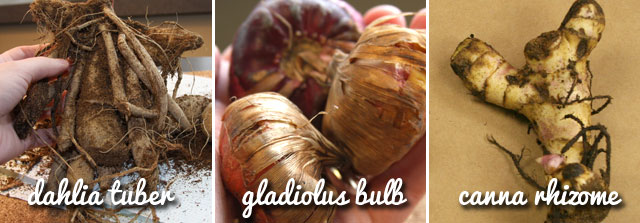I’ll admit it: up until a few years ago, I didn’t mess around with bulbs that weren’t hardy in my area. I only grew those plants which I knew would reliably return year after year and if I did grow anything that wouldn’t survive the winter, well, I grew it as an annual and just planned on replanting the following season. However, I soon grew tired of spending large amounts of money each year on plants and bulbs that would simply be lost to earth once the snow began to fall. It was finally when I fell absolutely head over heels for a dahlia which I grew that I decided to try the concept of overwintering some of these bulbs. I soon realized that my fear was not a legitimate one and the process was actually quite easy!
First of all, you will need to identify which bulbs are hardy in your zone and which are not. For those of you in the warmer zones, such as southern parts of 8, 9, 10, and 11, most of this will not apply. However, for anyone in the northern region of zone 8 or above, most of the spring-planted bulbs (such as dahlias, cannas, calla lilies, caladiums, begonias, etc.) will need to be overwintered indoors in order to keep them for next year. If you are unsure of your zone, simply enter your zip code here.
Once you have determined which bulbs you need to save from the winter weather, you are ready to get to work! Follow these simple steps to save yourself time and money next spring:
- Once the leaves of the plant have yellowed or been affected by a light frost, carefully dig the bulb, tuber, or rhizome from the ground.
- Brush off as much of the dirt as possible from the root system and place on a dry surface, such as a on top of a paper bag or screen of some kind.
- The time it will take for the root system to dry out (or “cure”) will depend on the specific type of bulb. Dahlias, for instance will be dry in a half of day, cannas will be ready overnight, and gladiolus take a couple of weeks. If in doubt, leave the bulbs for several weeks and check them for moisture. If any foliage or dirt remains attached once the root systems are cured, remove them.
- Once the bulbs are dried, you will want to place them in a shallow pot or tray and cover them with dry planting material, such as peat or sawdust. If you are overwintering any gladiolus, place them in a bag of breathable material but do not cover. Make sure to label your pots/bags with colors and varieties so that you know what you have when it comes to planting time in the spring!
- Place these containers in a cool, dark location which receives good air circulation and remains dry throughout the winter. Once the threat of frost has passed in the spring, replant and enjoy them again!
Now is the perfect time to start this process for many northern parts of the country. If the idea of overwintering your tender bulbs intimidates you, maybe just start with a few and give it a shot…I’m guessing you’ll find it easier than you thought!
Have a question specifically for Bridget? Feel free to email her at bridget@bulbblog.com!





